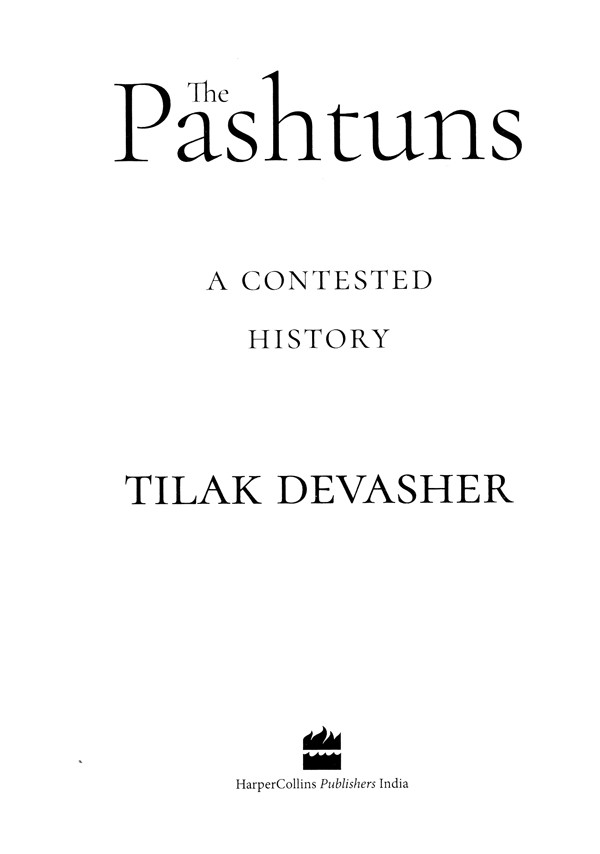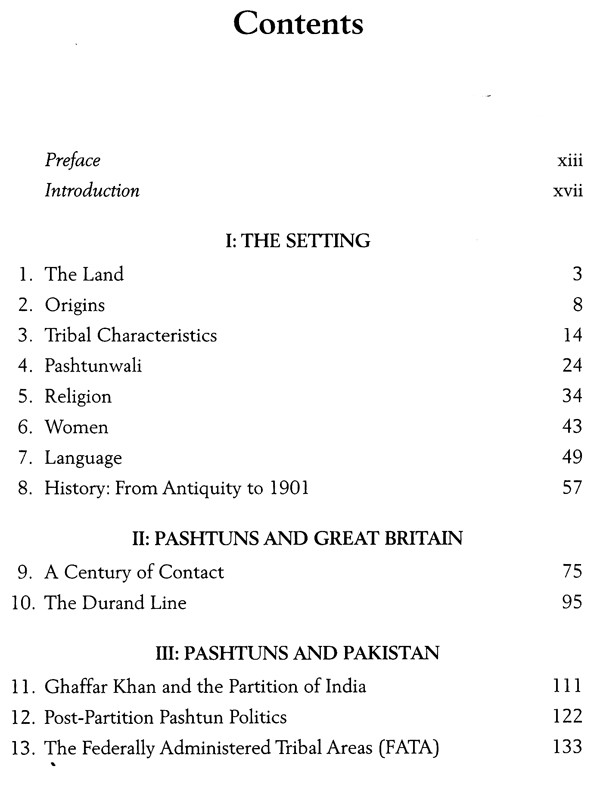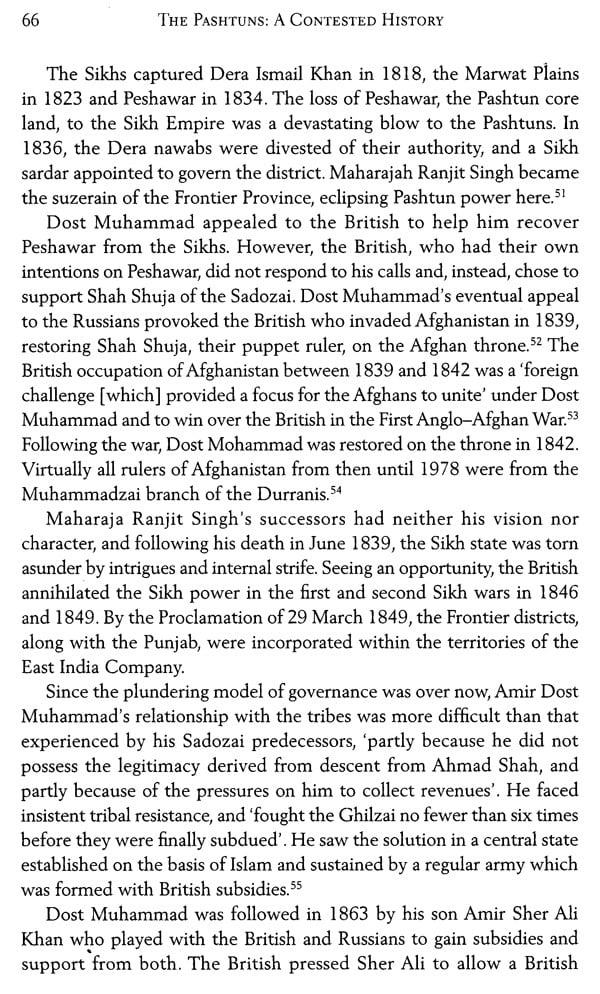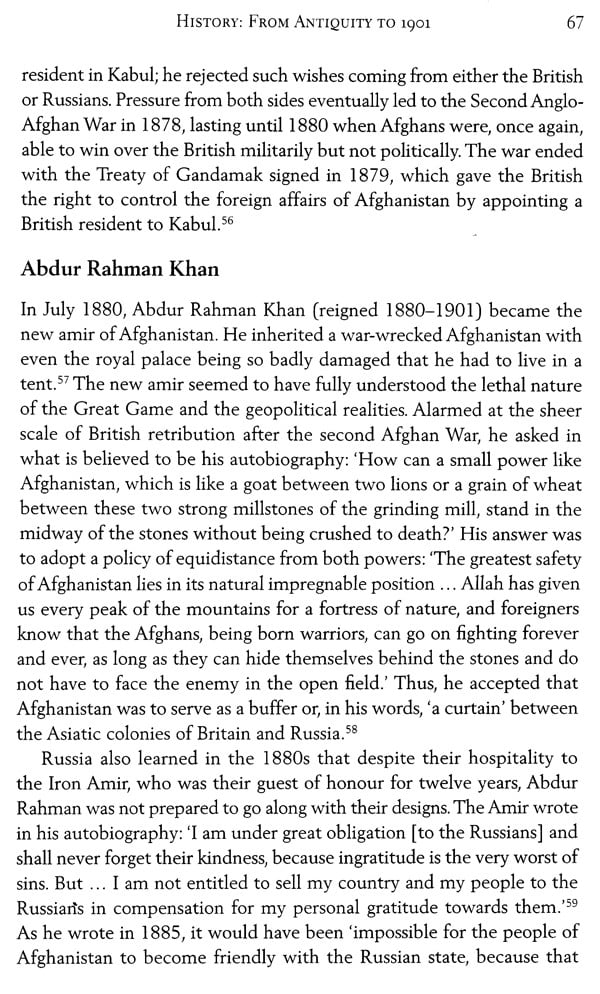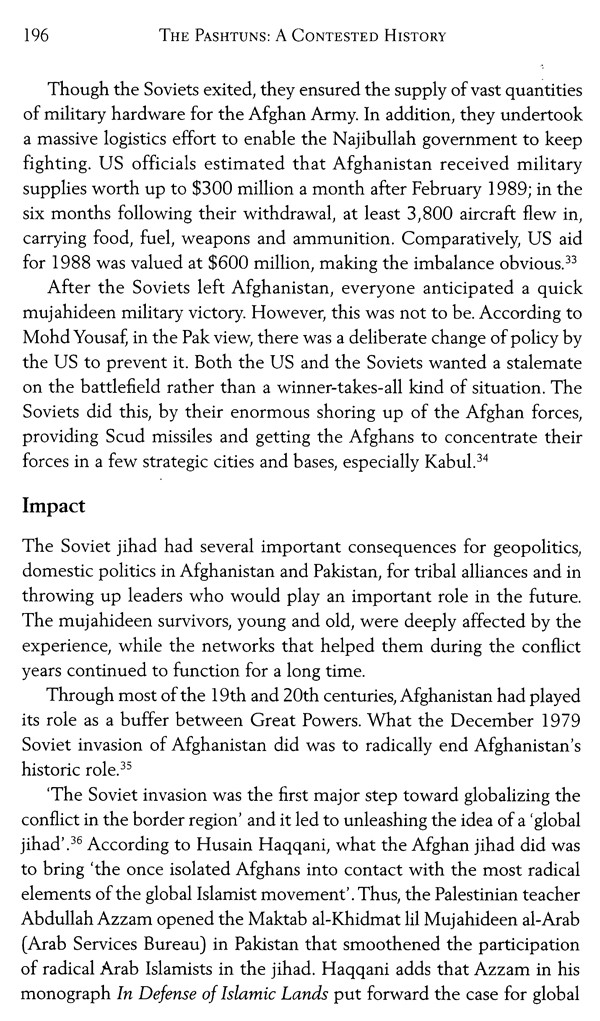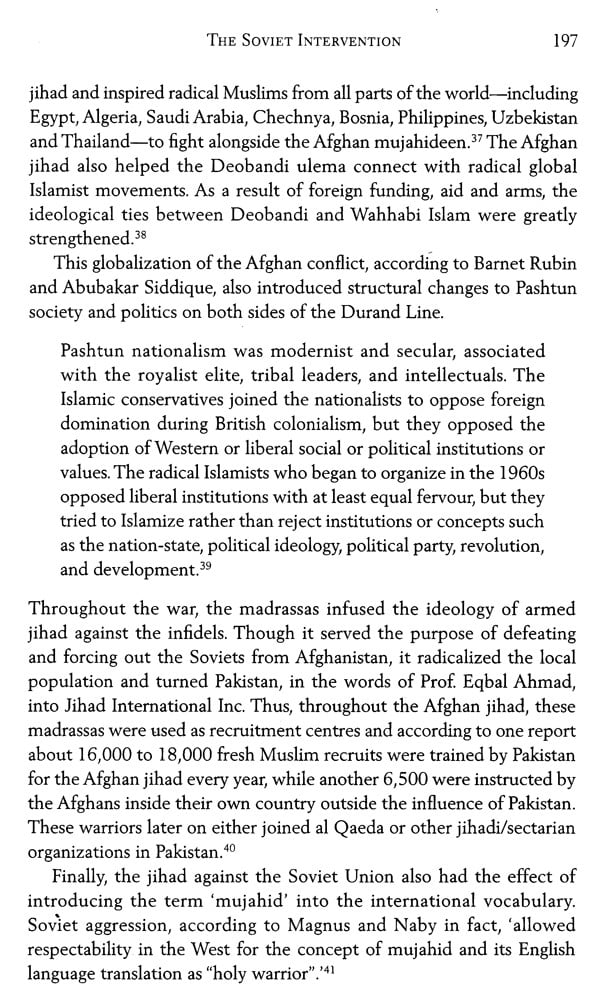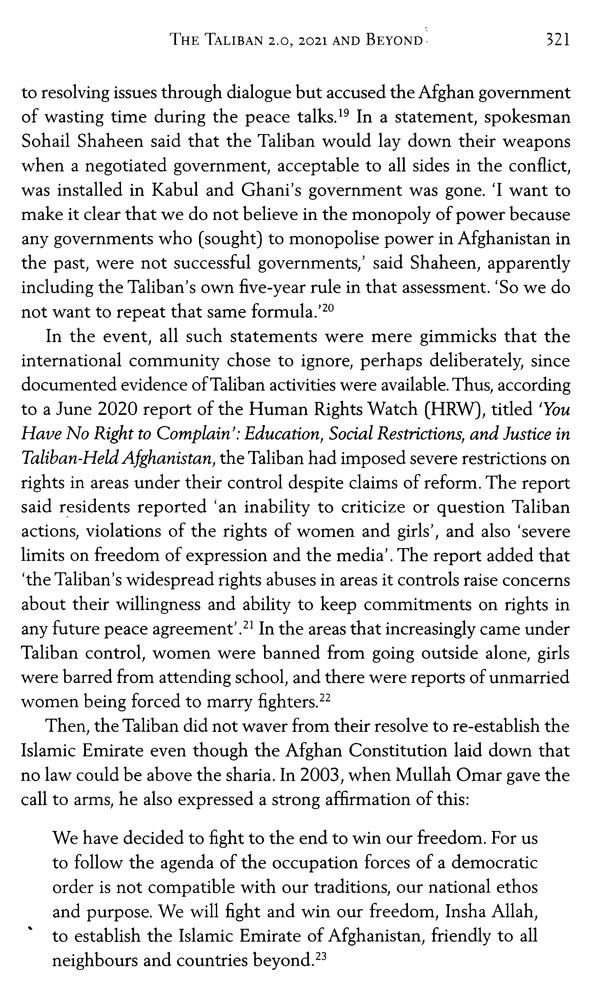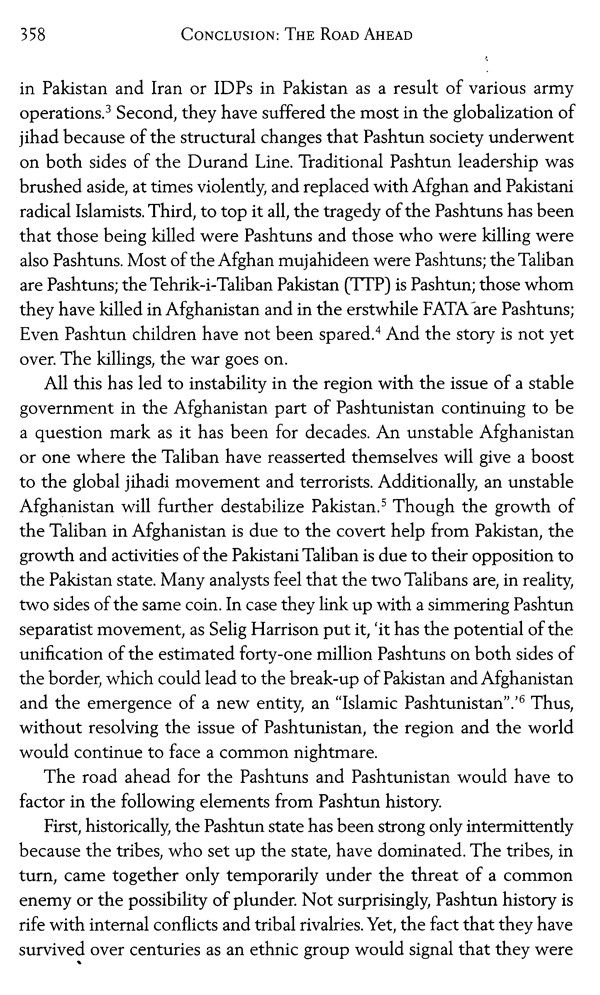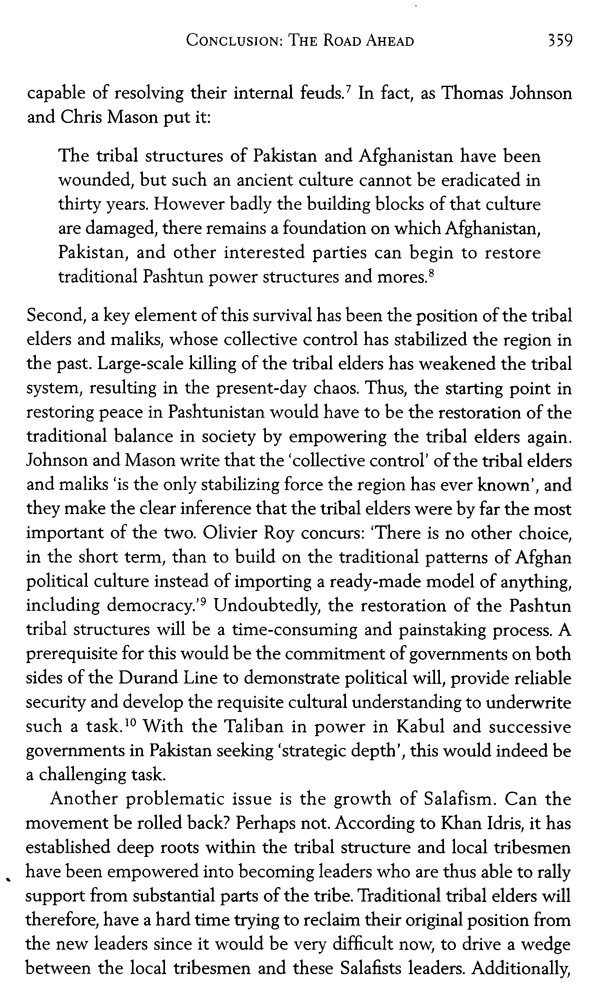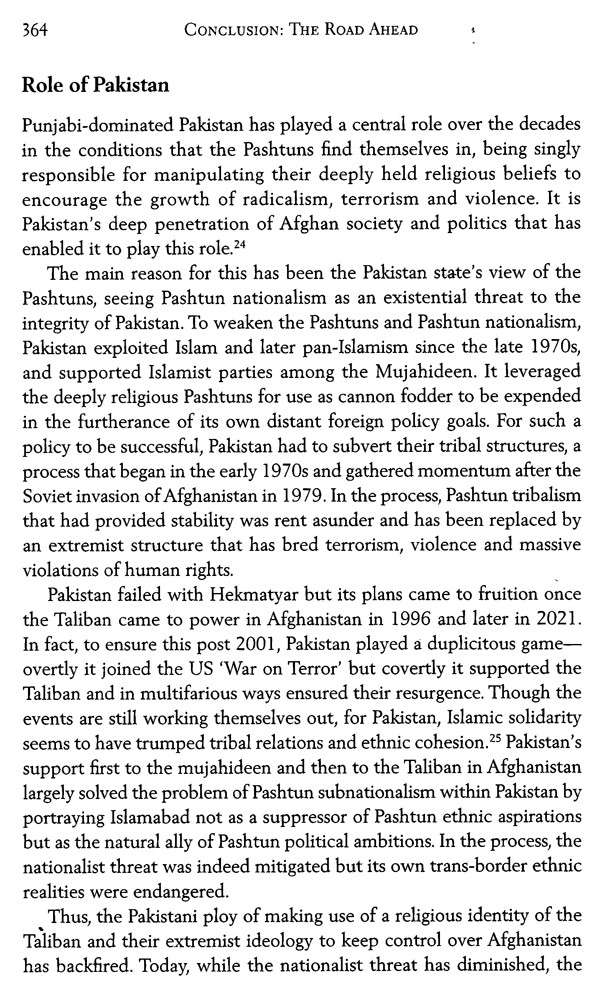
The Pashtuns (A Contested History)
Book Specification
| Item Code: | UAY481 |
| Author: | TILAK DEVASHER |
| Publisher: | Harper Collins Publishers |
| Language: | English |
| Edition: | 2022 |
| ISBN: | 9789394407633 |
| Pages: | 493 |
| Cover: | HARDCOVER |
| Other Details | 9.50 X 6.50 inch |
| Weight | 710 gm |
Book Description
The Pashtuns are perhaps the largest ethnic group in the world without their own country. They straddle Afghanistan and Pakistan where they inhabit a continuous stretch of land from the Hindukush to the Indus. Through history, the land of the Pashtuns Pashtunistan-has been on the invasion route to the riches of India and, resultantly, contested between empires. In modern times, the Pashtuns have had the unique though dubious distinction of being invaded by three superpowers: the British in the nineteenth, the Soviet Union in the twentieth and the United States In the twenty-first centuries.
Battered by constant invasions, especially in the past fifty years, the Pashtun society has been rent asunder and become radicalized. Despite this, and despite being presently divided between two countries, the Pashtuns share an abiding faith of descent from a common ancestor, a common code-Pashtunwali-common ethnic, cultural and familial bonds, and a common language-Pashto. In addition, no Afghan government, including the Taliban, has accepted the division of Pashtunistan. Unsurprisingly, the slogan 'Lar o bar, yaw Afghan'-lowlands of Pakistan or highlands of Afghanistan, the Afghans are one-has acquired greater resonance in recent times.
The Pashtuns not only looks at the contested history of the people, it deals with the community or quam, though divided into separate countries. Written by veteran analyst Tilak Devasher, it fulfils a gap in the geopolitical understanding of South Asia, made all the more urgent by the return of the Taliban in Afghanistan backed by Pakistan and the ferment among Pakistan-based Pashtuns, both violent and non-violent.
TILAK DEVASHER is the author of three widely acclaimed books on Pakistan-Pakistan: Courting the Abyss (2016), Pakistan: At the Helm (2018) and Pakistan: The Balochistan Conundrum (2019). He has also edited three books on Pakistan for the Vivekananda International Foundation. He retired as Special Secretary, Cabinet Secretariat, Government of India, in October 2014. He is currently a member of the National Security Advisory Board (NSAB), Consultant with the Vivekananda International Foundation, Distinguished Fellow, United Services Institution and emeritus faculty member, Rashtriya Raksha University.
During his professional career he served in Jammu and Kashmir, Delhi and abroad. He specialized in security issues, especially pertaining to India's neighbourhood. Post retirement, he has continued to take a keen interest in such issues with a special focus on Pakistan and Afghanistan.
Devasher did his schooling from Mayo College, Ajmer and studied History at St Stephen's College, University of Delhi.
GROWING UP, I KNEW TWO things about the Pashtuns and Afghanistan-Nobel Laureate Rabindranath Tagore's 1892 short story titled 'Kabuliwala" which is taught in almost all schools across India, and India's first fairness cream-Afghan Snows. Both were benign. The larger-than-life Abdul Ghaffar Khan and his deep links with Gandhiji and the non-violent Indian freedom struggle further reinforced the benign image of the Pashtun. Bollywood pitched in too, with the depiction of the Pathan as a friend and someone who fought on the side of the oppressed, especially women, and a host of actors who traced their origins to Pashtun ancestry.
Later, when older, I was, however, stunned by the violence in Afghanistan that was in total contrast to the image I had about the Pashtuns-the Soviet invasion, the Mujahideen, the civil war, the depredations of the Taliban, the 9/11 tragedy, the war on terror and now the Taliban back in power made me want to find out what went wrong with the Pashtuns. Other preoccupations prevented me from writing about them till now.
This is a book about the Pashtuns who straddle an area of more than 100,000 square miles. I refer to this land as Pashtunistan-the land of the Pashtuns. This ancient land and its people have been contested between empires and seen many vicissitudes over the centuries. Today, the Pashtuns are divided by the British era Durand Line into Afghanistan and Pakistan. As a result, the Pashtuns, despite being the largest Muslim tribal population in the world, are without a state of their own.
Though divided between two countries, the Pashtuns share a common ideology of descent, common ethnic, cultural, linguistic and familial bonds, common historical memories, and belong largely to the Sunni Hanafi school of Islam with pockets of Shias. These unifying bonds do justify a book that strives to see the Pashtuns as a single entity inhabiting a single piece of real estate, as it were, distinct from its neighbours. This book is also written in the belief that the present division is just one of the several avatars that this land and its people have been subject to over the centuries. Though no discussion of the people can be divorced from the countries in which they reside, the book is neither in the main about Afghanistan nor Pakistan, but about the Pashtuns.
In the words of Olaf Caroe, one of the notable tragedies amongst the many tragedies of the Pashtuns is:
Although the Pathans have stood for centuries in the corridors between Khurasan and the Indian sub-continent just at the very point where great civilizations have met and contended; although their mountain homes have been swept by conquering armies again and again, to rise like a breakwater from the sea; although the conquerors have passed on to found great empires, yet the Pathans who hold the gate have never been given a vision of their own story in perspective. In the modem sense there is no connected history of the Pathans in their own land, whether written by themselves or by any of those through the passed by.
PASHTUNISTAN, THE LAND OF THE Pashtuns, has historically stretched roughly from the Indus River to the Hindu Kush range. It had a common government from 1747 right up to 1834, when the Sikhs tore off the part of it lying between the Indus and the foothills on the west. Today, the 2,640 kilometre-long disputed Durand Line divides the land and the people between Pakistan, a country created in 1947, and Afghanistan, a country that started taking shape two centuries earlier in 1747.
Through most of history, the Pashtun region now included within the boundaries of Afghanistan and Pakistan had witnessed more invasions than any other in Asia, or perhaps the world. From the Aryans in about the second millennium BCE, to the Greeks, Persians, Sakas, Kushans, Hephthalites (White Huns), Arabs, Mongols, Turks, Mughals, British and Soviets, to the US, the region has perhaps seen it all. Most attempted to conquer and subdue the Pashtuns but ultimately failed. The reason was that, as all invaders found out, the Pashtun tribesmen would not be defeated. As has been well put:
You cannot defeat people who have no concept of defeat in the classical sense. They only believe in survival. They know when to fight, when to run and hide, and when to talk. Military operations against such adversaries can only have one objective to bring them to the negotiating table.
Thus, despite the use of every conceivable weapon of the time, the objective was the same-negotiations.
In medieval times, Pashtunistan was a borderland between empires that ruled from India, Iran or Central Asia. In the last two centuries, it has had the unfortunate distinction of being invaded by each of the great powers of the times: Great Britain in the nineteenth century, the Soviet Union in the twentieth and the United States in the twenty- first. Uniquely, too, each time the invasions were motivated not by any intrinsic value of Pashtunistan in terms of resources or riches but due to geostrategic reasons. For millennia, landlocked Pashtunistan, located as it was at the crossroads of Central Asia, South Asia, the Middle East and East Asia, was the transit route to the riches of India. All through the nineteenth century and the beginning of the twentieth, the Pashtuns became pawns in the chessboard of the Great Game between Great Britain and Russia, with Pashtunistan as a buffer state. In the latter half of the twentieth century, they became the victims of the Cold War between the United States and the USSR, and were subjected to an invasion and a destructive civil war. The twenty-first century has seen the Pashtuns as a central factor in the 'war on terror' and its aftermath. At the time of writing, it again faces an uncertain future with the Taliban back in the saddle.
Not surprisingly, as Arthur Swinson puts it: 'No area of comparable size has seen so much action, bloodshed, intrigue, gallantry, savagery, devotion, patience or sacrifice. Here, both virtues and vices have been bred on a heroic scale; and the centuries have passed without eroding them. Pashtunistan has seen great conquerors like Alexander the Great, Timur, Babur and Nadir Shah; in more modern times, soldiers, administrators and leaders like Pollock, Napier, Nicholson, Roberts, Churchill, Wavell, Lytton, Curzon, Gandhi, Nehru, Atlee, Jinnah and Mountbatten. Of the many famous names in Pashtunistan, none is more so than the Khyber Pass. As James Spain puts it: 'History hangs heavy on the Khyber and has left its mark upon its sombre stone. Ground into the dust of the pass is Persian gold, Greek iron, Tartar leather, Mogul gems, Afghan silver and British steel. All have watered it with their blood.
**Contents and Sample Pages**
